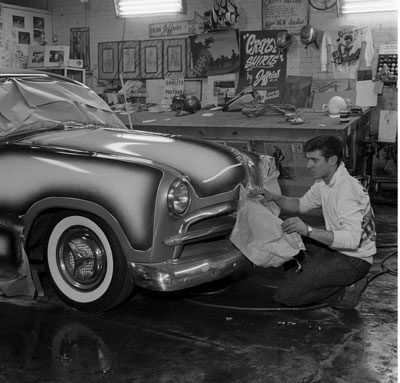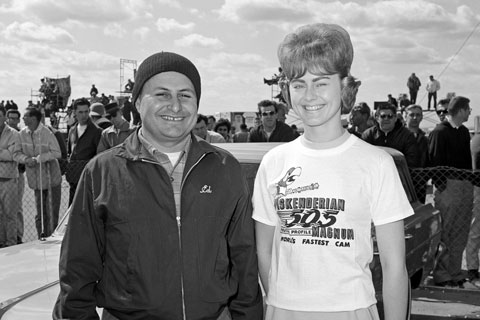SEMA News—January 2020
HERITAGE
By Drew Hardin
Panel Painting
Photo Courtesy Eric Rickman, Petersen Publishing Company Archive
 |
Trend-setting custom car builder Larry Watson is credited with creating the first panel paint job in 1958, when he tried to tone down the bright silver paint on his newly customized ’58 Thunderbird by covering several of the car’s body panels in metallic burgundy, leaving the silver to show through as accents.
In a January 1961 Hot Rod how-to article, the editors described the process as “an exciting if not controversial” customizing technique. “As the logical evolution of striping, scalloping and flame painting, the panel kick provides the effects of all three while offering still more outlet for the highly imaginative artist with a spray gun.”
For this story, the “highly imaginative artist” was striper/painter/T-shirt airbrush artist/car builder Dean Jeffries, who demonstrated the technique on a customized shoebox Ford. Petersen Publishing Company photographer Eric Rickman documented the process as Jeffries first laid out the panel edges using a marker on the car’s fresh base coat and then masked the drawn design with 1/4-in. tape. With the edges finalized, Jeffries used masking paper to cover the areas not to be painted.
“Now comes the hard part,” the story warned. The panels to be painted were sanded with 400-grit paper, blown clean, and washed with solvent before being painted white. “After the white had set up, edges were fogged, accomplished by spraying with fine light coat first and then going back over to gradually darken the inside edges.”
This photo, which didn’t appear in the story, shows Jeffries removing the paper from the car’s front end, a step to be done “while the paint is slightly tacky,” the story said. “Pull [the tape] straight up. With enamel, rough edges will smooth out. Rub out lacquer before striping the edges.” Pinstriping around the panels “gives best separation and a more distinctive outline.”
Though it had been a couple of years since Watson set the stage for panel paint, the Hot Rod editors still felt the need to explain the then-radical process: “No longer is a paint job merely a protective finish; now each custom becomes a mobile masterpiece with sharp detail and overspray blends highlighting the original metalwork with bursts of color and accentuating curves.” They showed readers the process “just on the chance that the gimmick might appeal to you; the middle-aged, conservative and faint of heart notwithstanding.”






